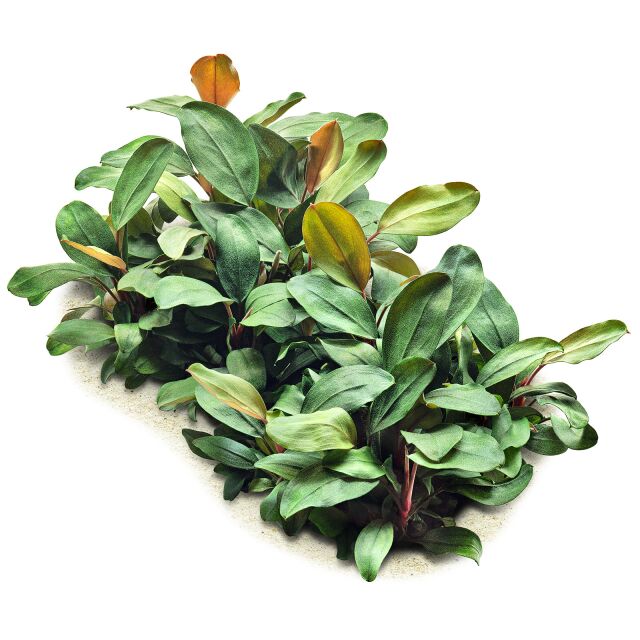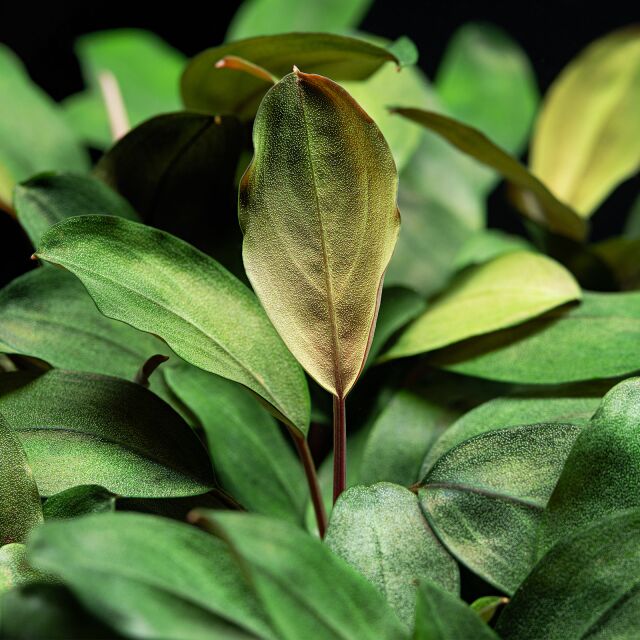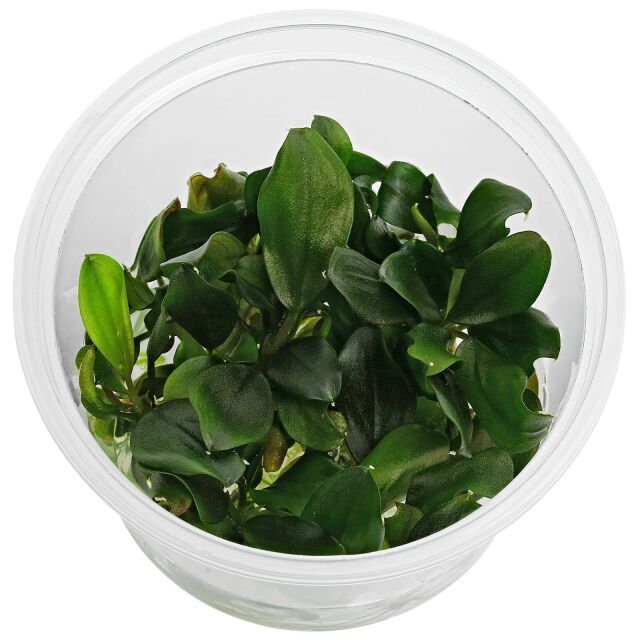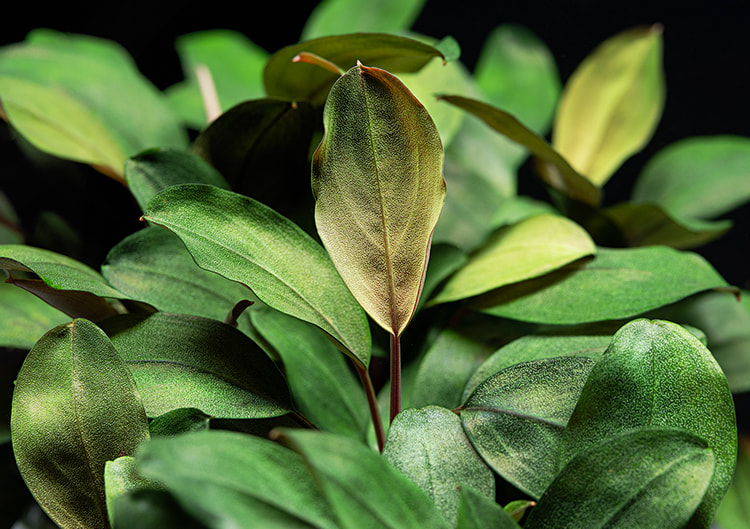



Bucephalandra sp. "Melawi Fine Edge"
- Large, decorative Bucephalandra form
- Elliptic leaves with dark green tones
- About 10-12 cm high
Item question
We’re here for you!
Please enter your question and e-mail and we’ll contact you as soon as possible. It usually takes us up to 24 hours during business days to respond.
Thank you for your question!
Thank you, we’ll get in touch!
Close window
You already sent us a question.
Please wait a few minutes
Description
Under the trade name "Melawi Fine Edge", we received different-looking large Bucephalandra forms. Their exact origin and species identity are not known to us, but all Bucephalandras are native to the island of Borneo. They occur there as flow-adapted plants (rheophytes) on rocks in the flood zone of streams.
Plants labelled as "Melawi Fine Edge" vary greatly in leaf shape. The leaf blades are often elongated with wavy edges and a dark green upper side. Our tissue culture plant, however, has broadly elliptical, non-wavy leaves. It possibly belongs to the species Bucephalandra akantha. Together with the stem, the leaves are about 8-12 cm long. When the plant is cultivated submersed, the strong rhizome grows stem-like, ascending to erect, and branches out at the base. The shoot tips are reddish in colour. In the terrestrial form (emersed), the rhizome tends to grow creeping.

Bucephalandra species and forms are primarily epiphytic plants that attach themselves to rock or wood with their roots. However, they can also be attached to the substrate, but the rhizome should not be buried as this could cause it to rot. The plant will then root itself and benefit from the nutrients in the substrate. Growth is generally slow to very slow.
Bucephalandras can cope with low light levels, but develop best with medium light levels, a constant supply of CO2 and nutrients and good water movement. Strong lighting is tolerated if the nutrient and CO2 supply is sufficient. The temperature can be between 20 and 27 °C.
We recommend placing Bucephalandras in tanks that are already established. It is best to leave them to grow undisturbed for a long time. Sudden changes in conditions can cause the leaves to fall off, but the plants usually slowly produce new shoots on the rhizome afterwards.
Bucephalandras are propagated by cutting off side shoots or head shoots, which also encourages the stems to branch out.
General information
Please choose a variant to see more information.
| Item no. |
|
| EAN | |
| Weight | |
| Shipping weight |
Customers ask customers
You have questions about this product? Ask other customer or our support team about this product!